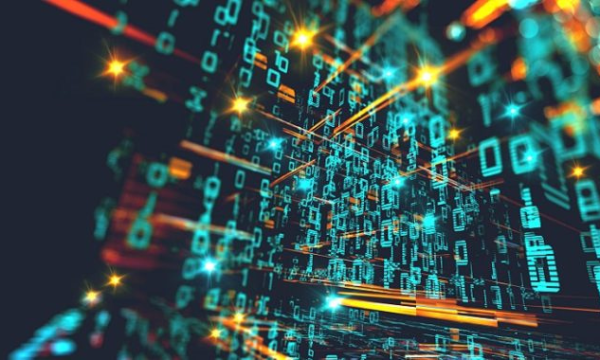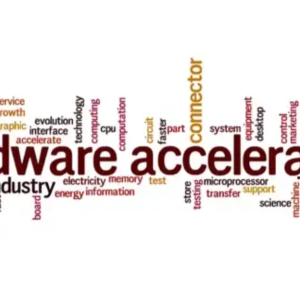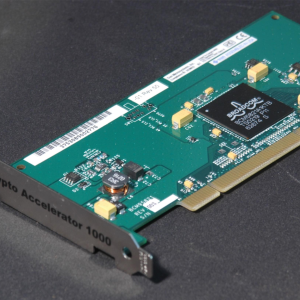
In today’s digital age, hardware acceleration plays a pivotal role in enhancing the performance and efficiency of computing systems. By leveraging specialized hardware to perform tasks more efficiently than general-purpose CPUs, hardware acceleration significantly improves the speed and responsiveness of applications. This guide explores the concept of hardware acceleration, its benefits, and how it impacts various aspects of modern computing.
What is Hardware Acceleration?

Hardware acceleration refers to the use of dedicated hardware components to perform specific tasks more efficiently than a software-based approach running on a general-purpose CPU. This specialized hardware is designed to handle particular types of computations or processes, resulting in faster execution and reduced load on the main processor.
Hardware acceleration is employed in a wide range of applications, from graphics processing to data encryption, and is a fundamental component of modern computing environments. By offloading tasks to specialized hardware, systems can achieve better performance and efficiency.
Types of Hardware Acceleration
- Graphics Hardware Acceleration
- Graphics Processing Units (GPUs): GPUs are designed to handle complex graphics computations, making them ideal for rendering high-resolution images and video. Modern GPUs accelerate tasks such as image processing, video decoding, and gaming graphics, resulting in smoother visual experiences and faster rendering times.
- DirectX and OpenGL: These APIs leverage GPU hardware acceleration to deliver high-performance graphics in games and applications. By offloading rendering tasks to the GPU, these APIs enable more detailed and immersive visual experiences.
- Video Hardware Acceleration
- Video Decode/Encode Engines: Specialized hardware in GPUs or dedicated video processing units (VPUs) accelerate the decoding and encoding of video streams. This is crucial for applications such as video playback, streaming, and video conferencing, where smooth and high-quality video performance is essential.
- H.264 and HEVC: Video codecs like H.264 and HEVC (High-Efficiency Video Coding) use hardware acceleration to improve video compression and decompression efficiency, reducing the workload on the CPU and enhancing playback performance.
- Cryptographic Hardware Acceleration
- Hardware Security Modules (HSMs): HSMs are specialized devices designed to perform cryptographic operations, such as encryption and decryption, securely and efficiently. By offloading these tasks from the CPU, HSMs enhance data security and processing speed in applications requiring secure transactions and communications.
- Artificial Intelligence (AI) and Machine Learning (ML) Acceleration
- Tensor Processing Units (TPUs): TPUs are custom-designed chips optimized for AI and machine learning tasks. They accelerate the training and inference processes in neural networks, significantly speeding up the execution of complex AI models and applications.
- Neural Network Accelerators: These accelerators are integrated into GPUs or dedicated hardware to enhance the performance of AI algorithms, enabling faster and more efficient processing of large datasets.
Benefits of Hardware Acceleration
- Improved Performance
- Faster Processing: Hardware acceleration provides specialized processing power that allows for faster execution of specific tasks. This results in quicker response times and enhanced performance in applications such as gaming, video playback, and data analysis.
- Reduced CPU Load: By offloading tasks to dedicated hardware, the main CPU is freed from handling resource-intensive operations. This reduces the overall workload on the CPU and can lead to better multitasking and system responsiveness.
- Enhanced Efficiency
- Lower Power Consumption: Specialized hardware often operates more efficiently than a general-purpose CPU, resulting in lower power consumption for specific tasks. This is particularly important in mobile and embedded devices, where power efficiency is crucial.
- Optimized Resource Utilization: Hardware acceleration optimizes the use of system resources by assigning specific tasks to dedicated components. This ensures that each hardware element performs at its best, leading to improved overall system efficiency.
- Better User Experience
- Smoother Visuals: In graphics-intensive applications such as gaming and video editing, hardware acceleration enhances visual quality and smoothness. This results in a more immersive and enjoyable user experience.
- Faster Data Processing: For applications involving large datasets or complex computations, hardware acceleration can significantly reduce processing times. This leads to quicker data analysis and faster results, benefiting users in various fields such as research and finance.
Implementing Hardware Acceleration
- Choosing the Right Hardware
- Compatibility: Ensure that your hardware is compatible with the acceleration technologies required for your applications. For example, a high-performance GPU is essential for graphics acceleration, while an HSM is necessary for secure cryptographic operations.
- Performance Considerations: Select hardware that meets the performance requirements of your applications. Consider factors such as processing power, memory capacity, and specialized features when choosing hardware components.
- Configuring Software for Acceleration
- Driver Updates: Keep your hardware drivers updated to ensure optimal performance and compatibility with the latest acceleration technologies. Manufacturers frequently release driver updates to enhance functionality and fix issues.
- Application Settings: Many applications offer settings to enable or optimize hardware acceleration. Adjust these settings to take full advantage of your hardware’s capabilities and improve performance.
- Monitoring and Maintenance
- Performance Monitoring: Use tools to monitor the performance of hardware-accelerated tasks and identify potential bottlenecks. This can help you make informed decisions about hardware upgrades or configuration adjustments.
- Regular Maintenance: Perform regular maintenance on your hardware to ensure its continued efficiency and reliability. This includes cleaning components, checking for hardware issues, and keeping firmware updated.
Conclusion
Hardware acceleration is a critical component of modern computing, providing significant benefits in performance, efficiency, and user experience. By leveraging specialized hardware for specific tasks, systems can achieve faster processing, reduced CPU load, and enhanced overall efficiency. Whether it’s for graphics, video, cryptography, or AI, understanding and implementing hardware acceleration can lead to a more responsive and capable computing environment. As technology continues to advance, hardware acceleration will remain a key factor in driving innovation and enhancing the capabilities of modern systems.
If you have any questions for us, you can see more at: https://hardwarepc.xyz/, X



